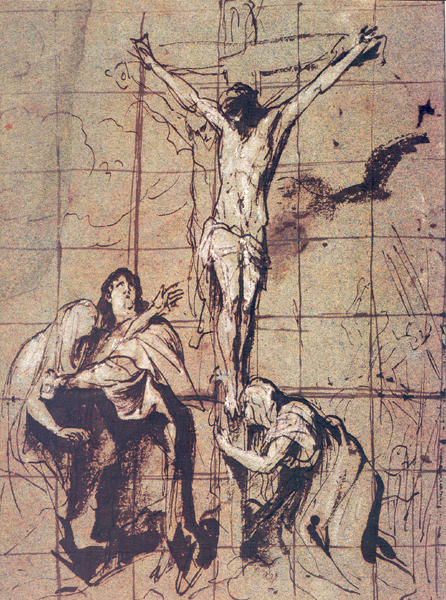Image Details

British Museum
“Woman, here is your son,” Jesus tells Mary as he looks down from the cross on his mother and “the disciple whom he loved.” To the disciple, Jesus says, “Here is your mother.” After this, “Jesus knew that all was finished” (John 19:26–28).
Early church tradition and the 17th-century Flemish artist Anthony Van Dyck, who painted this study of the crucifixion, identified the unnamed beloved disciple as both the author of the Fourth Gospel and the disciple John. This identification of the evangelist as an apostle may have encouraged the inclusion of John’s book in the collection of the four gospels, in the order Matthew, Mark, Luke and John, that emerged by the end of the second century C.E. Although several types of gospels existed then—including Gnostic gospels that relate conversations between Jesus and his disciples after the resurrection, as well as the hypothetical “Q,” which lists pithy sayings by Jesus—the early Church sanctioned only those gospels that narrate the life and death of a human Jesus. By selecting four of these biographical gospels, the church kept together varying narrative versions, despite problems created by comparative readings.
